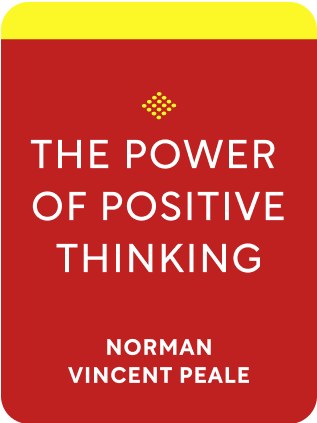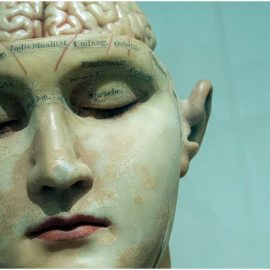

This article is an excerpt from the Shortform book guide to "The Power of Positive Thinking" by Norman Vincent Peale. Shortform has the world's best summaries and analyses of books you should be reading.
Like this article? Sign up for a free trial here .
Is Norman Vincent Peale’s The Power of Positive Thinking worth reading? What is the key premise of Peale’s message?
The Power of Positive Thinking by Norman Vincent Peale is a classic in the self-help genre. In it, Peale asserts that we can overcome any hardship and achieve any goal through optimism and faith in God.
The following The Power of Positive Thinking review covers the book’s context, background, and critical reception by the readers.
About the Author
Norman Vincent Peale was a Reformed minister who served as the pastor of Marble Collegiate Church in New York City from 1932-1984. He was also an influential author and public speaker, largely because of The Power of Positive Thinking‘s success.
Peale was a close friend and advisor of former president Richard Nixon, and Ronald Reagan awarded him the Presidential Medal of Freedom in 1984.
Peale held a Master of Arts degree in Social Ethics from Boston University, and a Doctor of Divinity degree from Syracuse University.
Explore Peale’s Ideas:
Norman Vincent Peale passed away in 1993. However, the Peale Foundation—a self-help group founded by Dr. Peale and his wife Ruth Peale—is still active.
The Book’s Publication
The Power of Positive Thinking was originally published in 1952 by Prentice Hall. The book was on the New York Times’s bestseller list for three and a half years and was the Times’s #1 nonfiction bestseller for almost a full year.
Since then, The Power of Positive Thinking has been reprinted numerous times and translated into dozens of languages. We wrote this guide using the 2003 Touchstone edition (ebook).
Publisher: Simon & Schuster
Imprint: Touchstone (defunct)
Historical Context
The Power of Positive Thinking came out in 1952, a time when the U.S. population—and its interest in Christianity—was growing quickly. The surging church attendance was due at least in part to the Cold War: The threat of nuclear war drove many to seek comfort in religion. Also, as the U.S. was still recovering from the Great Depression and World War II, struggling people flocked to Peale’s promises that faith and positive thinking would bring them prosperity.
Intellectual Context
Several notable self-help books related to positive thinking and confidence came out in the early 20th century. James Allen’s 1902 book As a Man Thinketh argued that we quite literally become what we think about—that a person is defined by his or her thoughts—and therefore positive thoughts will lead to a positive life.
Napoleon Hill’s 1937 bestseller Think and Grow Rich took the concept a step further, drawing on the ideas of the 19th century New Thought Movement: Hill believed that thoughts not only shape a person’s character, but that person’s entire life experience. In other words, if you know what you want and pursue it with single-minded focus, you can imagine your perfect life into reality.
The Power of Positive Thinking adds what Peale calls “faith power” to the equation. For Peale, it wasn’t enough to simply imagine what you wanted; you had to ask God (or your “Higher Power” of choice) to help you create your ideal life. According to Peale, deep meditation and earnest prayer are the keys to taking control of your mind and your life.
More recently “New Age Philosophy” has taken these ideas to the extreme with books like Rhonda Byrne’s The Secret, which puts total faith in the power of belief to create desired outcomes and shape reality—for good or ill.
The Book’s Impact
The Power of Positive Thinking is one of the best-selling non-fiction books ever written, having sold some 15 million copies at the time of Peale’s death. Readers all over the world say that Peale’s message changed their lives for the better. For example, former U.S. President Donald Trump—whose family attended Peale’s NYC church—credits The Power of Positive Thinking for much of his personal and business philosophy.
Critical Reception
The Power of Positive Thinking reviews praise the book for its depth and practicality. For example, this review from Citywire compares the book to a bag of reliable and often-used tools for clearing away pessimism and despair.
Others, however, find Peale’s heavy reliance on God and the Bible to be off-putting. Some argue that the book’s methods are shallow and outdated; that they boil down to, “Just pray enough and everything will be fine.” Readers also criticize Peale’s reliance on anecdotes instead of scientific evidence.
Even other preachers criticized Peale’s work, saying that it wasn’t in line with the church’s teachings—they argued that God decides what happens to us; we don’t ask Him for what we want. Others said that the teachings weren’t wasn’t framed in proper clerical language; Peale acknowledged that they were right, but countered that he’d written The Power of Positive Thinking in simple, secular language because he meant it for everyday people.
Commentary on the Book’s Approach
Peale wrote The Power of Positive Thinking in the hopes that everyday people would use the lessons it taught. Therefore, the book uses simple language and approachable concepts, and it includes a large number of anecdotes to illustrate Peale’s points.
While The Power of Positive Thinking does succeed in presenting lessons that laypeople can understand and follow, the heavy emphasis on religion (specifically Christianity) may deter some modern readers from embracing them.
Commentary on the Book’s Organization
Individual chapters read somewhat like sermons: Peale teaches a lesson and illustrates it with stories about people who have benefited from that lesson. Some chapters end with lists of suggestions about how to put the lesson into practice.
However, the book as a whole is scattered, and later chapters tend to circle back to topics that Peale covered earlier. For example, the book’s final chapter is about how to draw upon your “Higher Power” (that is, God) to help you through hard times—something that Peale encourages you to do from the beginning of the book.

———End of Preview———
Like what you just read? Read the rest of the world's best book summary and analysis of Norman Vincent Peale's "The Power of Positive Thinking" at Shortform .
Here's what you'll find in our full The Power of Positive Thinking summary :
- That there is no problem or obstacle you can’t overcome with faith, positive thinking, and prayer
- The practical techniques of applied Christianity
- How to take control of the events in your life rather than be directed by them






